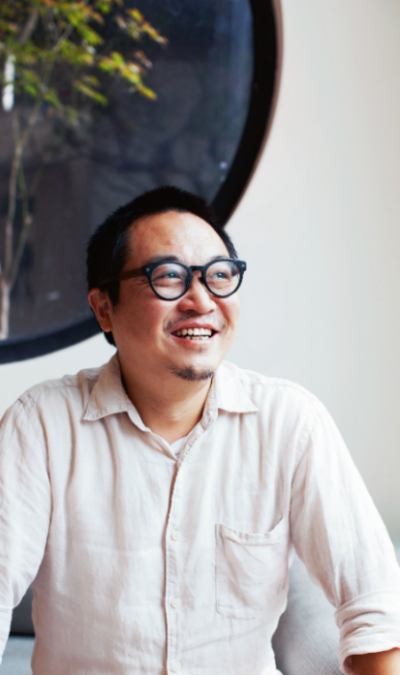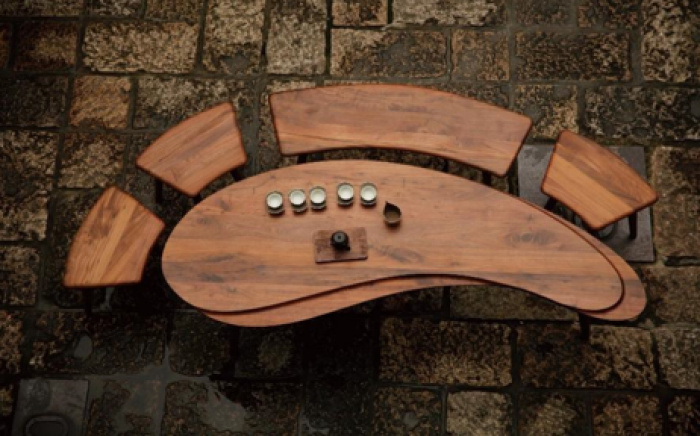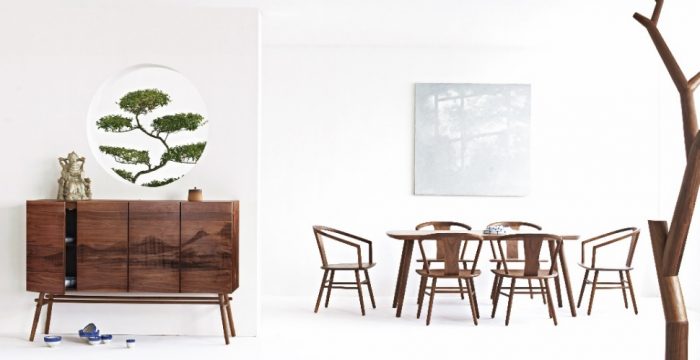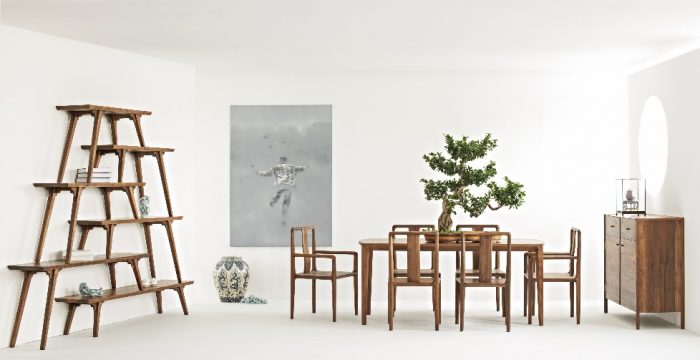Home > Case Studies > Hou Zhengguang: Reflecting on the World – Through Simplicity and Honesty of Natural Wood
HOU ZHENGGUANG: REFLECTING ON THE WORLD – THROUGH SIMPLICITY AND HONESTY OF NATURAL WOOD
“Human beings’ closeness to wood has been written into DNA, just like the ancient ancestors chose to dwell in lush forests with abundant water and vegetation. I hope to guide consumers to return their attention to the overall artwork, to perceive the natural essence and unique style conveyed by wood.”
Concise, clear, and spacious, these are the first impressions that Hou Zhengguang’s works give to people. As the Deputy Director of the Design Committee of the China National Furniture Association and the Vice President of the Shanghai Industrial Design Association, Hou Zhengguang has been dedicated to constructing contemporary Chinese-style homes, realizing “tranquility in bustling cities”. His original home furnishing brand, “MoreLess,” focuses primarily on Chinese-style wooden furniture that is exquisite but not intricate, classic but not heavy. Every step from design to application adheres to the philosophy “less is gain, more is confusion.”

The Way of Nature
“Less is gain, more is confusion” comes from the “Tao Te Ching”.
Interestingly, when Wang Bi, a renowned philosopher in the Three Kingdoms period, annotated the “Tao Te Ching”, he used the metaphor of a tree and interpreted these six characters as “The way of nature is like the growth of a tree. When it turns and branches out excessively, it extends further away from its roots. When it turns and branches out minimally, it stays close to its roots and essence. Excessive turning leads to veering away from the truth, hence it is called confusion; minimal turning stays with the core and truth, hence it is called gain.” Although Hou Zhengguang did not mention Wang Bi’s Annotations to the Tao Te Ching, his works embody the principles of “focusing on the core, respecting nature,” which coincides with it, like a spiritual encounter spanning 1,800 years.

Chinese style is not a superficial accumulation of traditional elements and symbols, but an interpretation and re-expression of artistic conception. The “You Yu” tea table has simple and smooth lines, as well as meaningful forms. It resembles a graceful swimming koi and also looks like a clear pond. If placed in a private residence, friends could gather around it to enjoy tea, stealing a half-day of leisure from the busy world. Hou Zhengguang emphasizes that his works will not be subject to many restrictions and pursue universality on various occasions. Looking down at the “You Yu” tea table, you will see half of the Tai Chi Diagram. As is known, objects cannot be independent of people. If placed in a commercial conference, when the host and guests take their seats, the balance of yin and yang will be achieved.

“Jian Nanshan” Foyer cabinet is a philosophical game played by designers and users with visual art. Dots are engraved on the surface of the cabinet, forming a pixelated dot matrix of a landscape. Up close, only dots are visible, but from a distance, the complete picture emerges, invoking the poetic imagery of “Not knowing the true appearance of Lushan Mountain, only because one is in it.” The “Jian Nanshan” cabinet is not limited to the foyer; it can also serve as a sideboard, an end-of-bed cabinet, a filing cabinet, etc. Without imposed limitations, it can adapt to various functions.
Back to the Essence of Life with Sustainable Wood
Talking about the understanding of wood, Hou Zhengguang said: “As a part of nature, human beings have a strong affinity for natural materials, especially wood. It’s like the ancient ancestors chose to dwell in vast forests with abundant water and vegetation. Thousands of years ago, trees provided humans with rich fruits and generous shade, and human beings’ closeness to wood is written into our DNA.”

Logging for timber is how we invite trees to be part of human lives, but if we exhaust resources without restraint, regrets are bound to arise. Hou Zhengguang insisted on choosing a supply chain with a sustainable management system from the very beginning of the brand’s establishment. “It aligns with both commercial principles and our own philosophy – natural, environmentally friendly, and sustainable. So, we chose to use American hardwood.”
When discussing the preference for wood in the Chinese market, Hou Zhengguang shares his insights: “Chinese people have always had a fondness for wood. Mahogany, the earliest representative material, is a dark-toned wood. From an aesthetic standpoint, we consider dark-toned woods to be more high-end, such as mahogany. However, these types of woods are now extremely rare. Among the commonly seen medium-to-high-end woods, oak and walnut represent the dark-toned category, and maple and beech represent the light-toned category. Among them, walnut in the dark-toned category is relatively more widely accepted. From a biological perspective, dark tone signifies higher density and hardness of the wood, so ‘judging wood by appearance’ makes sense. Additionally, there are cost-effective options represented by pine wood, as well as more affordable solid wood veneer panel products.”
Hou Zhengguang believes that the creation of contemporary Chinese living space requires the complementarity of technology and humanistic design, “In addition to the selection of wood types, we are also particularly interested in wood processing techniques, such as the TMT (thermally modified timber) processing of American hardwood, CLT (cross-laminated timber) technology, among others. These technologies enable the wood to achieve application scenarios and design forms that were previously impossible, providing designers with a broader creative space.”